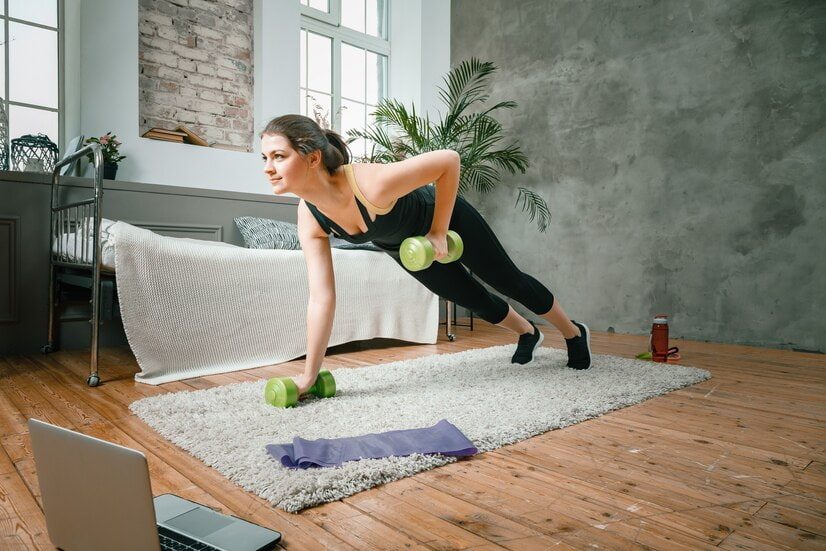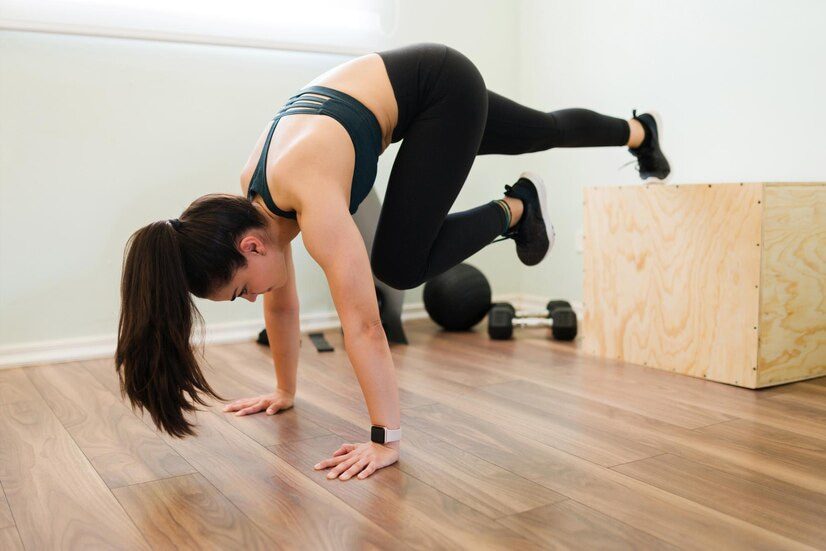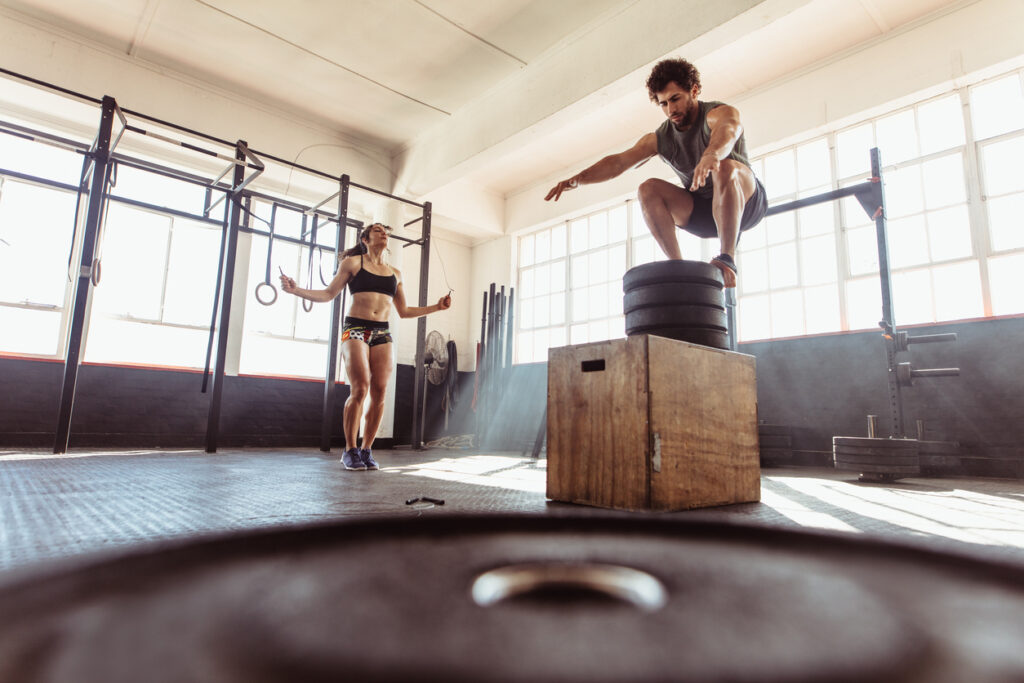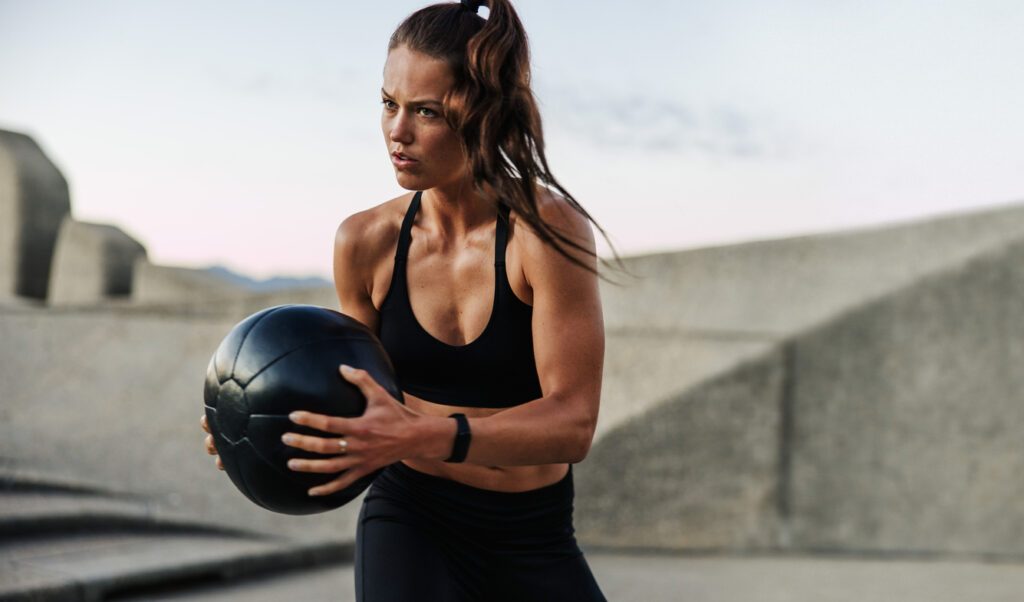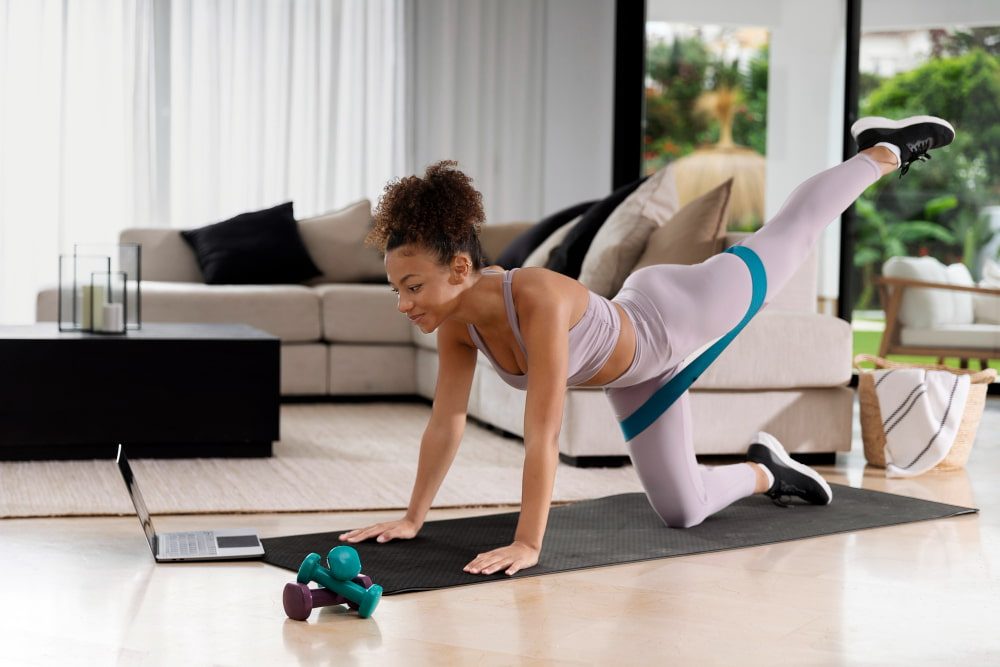
Summary
Welcome / Welcome / Tips for getting started / Home HIIT Workout: Complete Guide to Effective Home Workouts
Home HIIT Workout: Complete Guide to Effective Home Workouts
Looking for an effective way to train at home, without spending hours at the gym? HIIT, or high-intensity interval training, is the ideal solution. It combines short, intense sessions that are adaptable to all levels.
Introduction to HIIT
In this article, learn how to prepare your space, choose the right exercises, and structure your sessions for optimal results. Whether you're a beginner or an expert, these tips will guide you step by step.
THE HIITHIIT, or High Intensity Interval Training, is a training method that has become increasingly popular in recent years. But what exactly is HIIT, and why is it so popular? If you're looking for an effective way to burn calories, lose weight and stay fit, without spending hours in the gym, you've come to the right place. In this section, we'll explore what HIIT is, its many health benefits, and why it might be a good idea to incorporate it into your routine, especially at home.
Definition of HIIT (High Intensity Interval Training)
HIIT is a training method that alternates between periods of intense effort and short periods of recovery. For example, a HIIT session could consist of alternating 30 seconds of sprinting with 30 seconds of walking, repeated several times. This type of training allows you to challenge your body intensely over a short period of time, thus maximizing energy expenditure. What makes HIIT particularly attractive is that it does not require a lot of time to be effective. In just 20 to 30 minutes, you can complete a session that offers comparable or even better results than a longer traditional workout.
Benefits of HIIT for Health and Weight Loss
HIIT is not only fast and effective, it's also incredibly beneficial for your health. Among its many benefits are a significant improvement in cardiovascular capacity, an increase in metabolism that continues long after training, and better regulation of blood sugar levels. For those looking to lose weight, HIIT is a real ally. The intensity of the effort stimulates fat burning, even after the session is over, thanks to the post-combustion effect (EPOC). What's more, HIIT has been shown to help preserve muscle mass while losing fat, which is essential for healthy, lasting weight loss.
Why choose HIIT at home?
Choosing HIIT at home means choosing flexibility and efficiency. You don’t need a lot of space or fancy equipment. A mat, light dumbbells, or even your own body weight can be all you need to get an effective HIIT workout. Doing HIIT at home saves you time and money while giving you the freedom to work out whenever you want. Whether you have a busy schedule or prefer to avoid crowded gyms, HIIT at home is a great way to incorporate exercise into your daily routine. Plus, the familiar surroundings of your home can make the workout experience more enjoyable and less intimidating, especially if you’re new to it.
Preparation for a HIIT Session at Home
Getting started on a session HIIT at home requires a minimum of preparation. Whether you’re new to HIIT or a seasoned high-intensity workoutr, preparing your space and body is essential to fully enjoy the benefits of HIIT. In this section, we’ll go over the key elements to ensure you start each session in the best possible conditions.
Choosing the right space
Choosing your home workout space is crucial to a successful HIIT session. The goal is to find a clear area where you can move freely without risking injury. A living room, a spacious bedroom, or even a corner of the garden can work. Make sure the floor is flat and stable to avoid slipping or making false moves. Plus, a clear space allows you to fully concentrate on your exercises, without having to worry about moving furniture or going around objects.
Safety should be your priority before starting a HIIT session. Here are some tips to prepare your environment:
- Clear the floor : Remove anything that could cause you to trip, such as rugs, toys or cords.
- Ventilate the room : Good ventilation is essential to stay comfortable, especially during an intense workout. Open windows or use a fan.
- Lighting : Make sure the room is well lit to see your movements clearly and avoid accidents.
- Support : Keep a towel and a bottle of water nearby to hydrate and wipe away sweat.
These small adjustments can make a big difference in the quality of your workout and prevent injuries.
Necessary equipment
One of the great things about HIIT at home is that you don't need expensive equipment. Your body is your best tool. Exercises like burpees, squats, push-ups or lunges use only your body weight, making them accessible to everyone. Working with your body weight also allows you to work multiple muscle groups at once, increasing the intensity and effectiveness of your session.
If you want to vary your workouts or increase the challenge, you can incorporate a few simple props. A yoga or fitness mat provides extra comfort for floor exercises, such as planks or sit-ups. Light dumbbells can add extra resistance, especially for strength-training exercises. Finally, resistance bands or a kettlebell can also be used to intensify your efforts. These props are optional, but they can add a new dimension to your workout.
Warm-up before the session
Never skip a warm-up before starting a HIIT session. Warming up prepares your body for the intense effort that follows by gradually increasing your heart rate and warming up your muscles. This helps reduce the risk of injury and improve your performance. A good warm-up also stimulates blood circulation, which helps prepare your joints and tendons to handle the fast, dynamic movements of HIIT.
An effective warm-up can be done in just a few minutes. Here are some simple exercises to incorporate:
- Jumping jacks : A great exercise to increase your heart rate and activate your entire body.
- Arm rotations : Make circles with your arms to loosen up your shoulders and joints.
- Knee raises : By raising your knees toward your chest, you engage your lower body muscles while boosting cardio.
- Slow Squats : Performing squats at a moderate pace prepares your legs for the effort while mobilizing the hip and knee joints.
These warm-up exercises can be adapted according to your level and will allow you to start your HIIT session in the best conditions.
HIIT Workouts to Do at Home
HIIT is a training method that can be adapted to all levels, whether you're a beginner or an expert. One of the greatest advantages of this method is the flexibility it offers: you can modulate the duration, intensity and exercises according to your objectives and physical condition. In this section, we'll explore several HIIT sessions you can do at home, with circuits designed for different levels, from beginner to advanced.
Session for Beginners
If you are new to HIIT, it is essential to start gently to allow your body to gradually adapt to the effort. A HIIT session for beginners should be short, with simple but effective exercises, to familiarize you with the pace and intensity.
Example circuit:
- 30 seconds of jumping jacks
- 30 seconds of rest
- 30 seconds of squats
- 30 seconds of rest
- 30 seconds of mountain climbers
- 30 seconds of rest
For your first sessions, the goal is to focus on technique and breathing. Don't try to go too fast, but rather to perform each movement correctly. Take the time to recover well between each exercise, and don't hesitate to extend the rest periods if necessary. It is also important to listen to your body and not to force yourself if you feel unusual pain. HIIT is intense, but it should remain a pleasure.
Session for Intermediates
Once you're comfortable with the basics of HIIT, you can increase the intensity of your sessions. Intermediate sessions are designed to challenge you a little more, with exercises that put more strain on your endurance and strength.
Example circuit:
- 40 seconds of high knees
- 20 seconds of rest
- 40 seconds of burpees
- 20 seconds of rest
- 40 seconds of jumping lunges
- 20 seconds of rest
To intensify your workouts, you can reduce the rest time or increase the duration of work intervals. Add more challenging variations to your exercises, such as burpees with push-ups or jumping lunges with weights. You can also incorporate strength-training exercises with dumbbells to further challenge your muscles. The idea is to push yourself to your limits while listening to your body.
Session for Advanced
If you're a regular HIIT user and you're looking to push yourself, the advanced sessions are for you. They are longer, more intense and combine complex exercises to maximise physical effort.
Example circuit:
- 50 seconds of burpees
- 10 seconds of rest
- 50 seconds of push-ups with rotation
- 10 seconds of rest
- 50 seconds of squat jumps
- 10 seconds of rest
For experienced athletes, the aim is to excel at every session. You can reduce rest periods to just 10 seconds or eliminate them altogether for a real challenge. Play with the speed of execution too: try to increase the number of repetitions per interval. If you have the opportunity, incorporate equipment such as kettlebells or a jumping rope to increase the intensity and variety of your sessions. HIIT is a workout where you can constantly improve, so don't hesitate to vary the exercises and set yourself new challenges.
Tips to Optimize Your HIIT Sessions
To get the most out of your HIIT sessions, it's not enough just to follow intense circuits. Optimising your training involves a number of key factors, from time management to nutrition and monitoring your progress. These aspects will help you to improve your performance, maintain your motivation and achieve your goals more quickly.
Time and interval management
HIIT relies on a precise alternation between periods of intense effort and rest. This structure is essential to maximize the benefits of the workout. For beginners, a 1:1 ratio (30 seconds of effort to 30 seconds of rest) is ideal for getting used to the intensity. As you progress, you can adjust this ratio to increase the intensity, for example by moving to a 2:1 ratio (40 seconds of effort to 20 seconds of rest). Sticking to these intervals is crucial because they allow your body to recover enough to maintain a high intensity throughout the session.
Managing intervals manually can be difficult, especially when the effort is intense. That's where a timer or mobile app dedicated to HIIT becomes an indispensable tool. Apps like Tabata Timer or Seconds allow you to programme your work and rest intervals, ensuring you keep to the rhythm of your session without interruption. These tools can also motivate you by giving you audible or visual cues to move from one exercise to the next, helping you to stay focused on your performance.
Tracking progress
Keeping track of your progress is essential for staying motivated and assessing your improvement over time. Keeping a training diary is an excellent way of recording your performance, the exercises you do, the number of repetitions you do and how you feel after each session. This diary allows you to see your progress and detect trends, such as the days when you feel particularly fit or those when you need more rest. You can also write down your short- and long-term goals, which will help you stay focused and committed to your HIIT routine.
The key to success with HIIT is regularity. By training regularly, you gradually improve your endurance, strength and ability to recover quickly between intervals. It's also important to progress by increasing the intensity or complexity of the exercises. If you always do the same movements at the same intensity, your body will adapt and the results will stagnate. Try to push your limits, whether by increasing the length of the effort intervals, reducing the rest time, or incorporating new, more demanding exercises.
Nutrition and recovery
Nutrition plays a fundamental role in performance and recovery after a HIIT session. Before training, eat complex carbohydrates (such as oats or fruit) to provide your body with the energy it needs to withstand the intense effort. After the session, it's crucial to replenish glycogen stores and help with muscle repair. A protein-rich meal or snack (such as chicken, eggs or a protein shake) combined with carbohydrates (such as rice or vegetables) is ideal for maximising recovery and promoting muscle building.
After a HIIT session, it is essential to recover properly to avoid injuries and allow your body to regenerate. Hydration is the first step: drink plenty of water to compensate for the fluids lost through sweat. Then, take the time to do some gentle stretching to relax the muscles stressed and improve flexibility. Exercises such as stretching the quadriceps, hamstrings or calves are particularly beneficial. Finally, you can incorporate techniques such as foam rolling or even meditation to help with relaxation and mental recovery after exercise.
Conclusion
HIIT is an effective method for training at homeby combining intensity and time saving. By adapting your sessions to your level, you can optimise your physical condition while respecting your needs. The most important thing is to prepare yourself well and to keep up the regularity.
By following this advice, you can improve your performance and avoid injury. Every detail counts, from time management to nutrition. Your progress depends on your commitment and your ability to challenge yourself.
Go hiit with DRIP
At DRIP, you'll discover a brand new training environment and feel right at home! Our gyms in Paris 8 Or Paris 10 are waiting for you.
Ready to push your limits? Discover DRIP! With our diverse equipment, you will feel comfortable while pushing your performance.
At DRIP, it's clear: 7 exercises, 3 rounds, 1 minute per exercise. Chain without a break to maximize your calorie expenditure! Our coaches, our dynamic playlists and our immersive lighting will offer you unparalleled motivation.
Whatever your level, DRIP is here to welcome you!
Want to surpass yourself? Come join us in our Parisian studios in Monceau or Grands Boulevards. You will take up the challenge with enthusiasm! ❤️🔥
Share
Tagged
Read also
follow us
on instagram
To follow all our news,
take advantage of our tutorials and participate
in our many competitions.
BREAKING NEWS!
Receive our newsletter.
